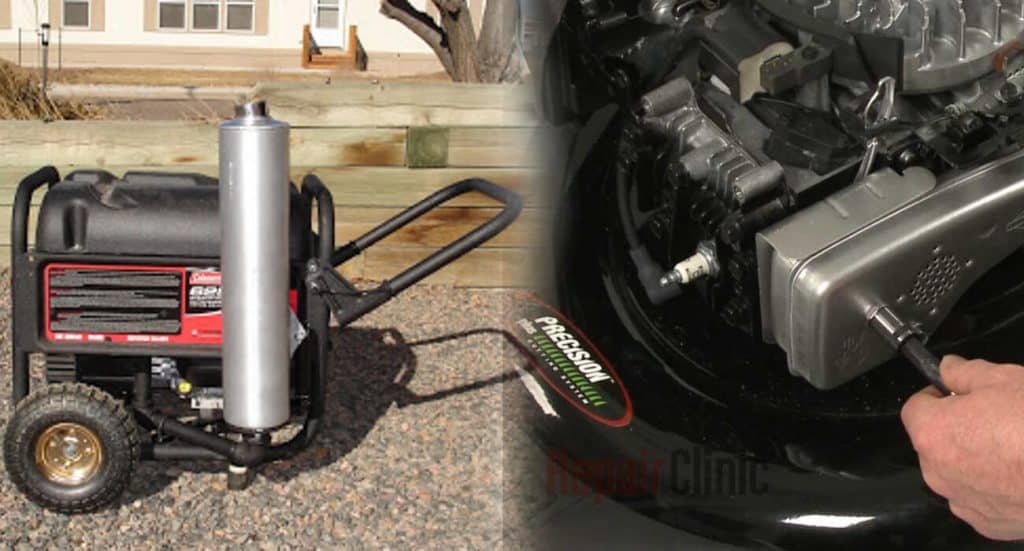June 11, 2021

The exhaust system is very vital to the well-functioning of an engine for it is the system that vents the exhaust gases (from the controlled combustion) away engine. This system usually consists of one or more exhaust pipes that readily convey burnt gases away from the engine. The exhaust system, aside from its pipes, usually comprises of mufflers and manifold:
What Are The Functions of Muffler In Small Engine?
Mufflers are usually installed in the exhaust system of almost all internal combustion engines. These mufflers are designed to reduce the engine’s level of noise of the sound pressure by way of acoustic quieting. The muffler abates this noise created by burning exhaust gas—that is moving at tremendous velocity—and wants to exit the engine. The exhaust system, via a series of chambers and passages that are lined with fiberglass insulation or any resonating chambers that are harmonically designed to counteract or cancel the noise created by the internal combustion.
The downside or side-effect of this type of noise-reduction scheme is the eventual restriction of the flow of the exhaust gas. This restriction creates back pressure that eventually lessens the efficiency of the engine. Since the narrow exit pathway—designed for the exit of sound pressure— is also the same narrow path that the exhaust gas has to use to exit away from the engine.
The two main purposes of mufflers are to reduce the noise created by the exhaust gas and to preclude the onset of exhaust sparks that may eventually ignite leaves, debris, and dry grass. Soot may also form inside the muffler after long years of usage, and this buildup may cause holes and cracks on the muffler that may lead to the eventual breaking down of the muffler.
What Are the Functions of Manifold in Small Engine?
The exhaust system also has a manifold that is designed to collect exhaust gases from the different cylinders into a single pipe. On the other hand, there is an inlet or intake manifold that supplies the needed air to the different cylinders. These exhaust manifolds usually consist of stainless-steel units or simple cast iron units that readily collect exhaust gas from the engine’s multiple cylinders. Afterward, these units deliver the gas toward the exhaust pipe.
Many engines can be fitted with aftermarket tubular exhaust manifolds that are known in the U.S. as “headers” and as “tubular manifolds” in Britain. These aftermarket tubular exhaust manifolds feature individual exhaust head-pipe for every cylinder, and each of these head-pipes converges into a single tube called a “collector.” There are also headers that don’t have collectors, and they are called “zoomie.”
Is There a Need to Customize the Manifold?
There are many aftermarket mufflers that are purportedly designed to increase the output of the engine and eventually reduce fuel consumptions by reducing back pressure. The use of these aftermarket mufflers sacrifices, therefore, the noise-reducing effect of the muffler. There are, however, laws that govern any alteration of the motor vehicle’s original parts and equipment of the exhaust system. In the first world countries, for example, there are strict regulations regarding such modifications. On the other hand, some manufacturers deliberately design engines and exhaust systems that allow for low-engine sound to give the driver audible feedback from the engine.
Aftermarket manifolds commonly feature stainless steel or mild steel tubing for the flat flanges and primary tubes. Moreover, the most common aftermarket manifold types possibly have larger-diameter collectors that are fashioned out of the same materials as the primaries. These common types of the manifold are generally painted with the heat-resistant finish or coated with ceramic-type of finish. There are also chrome-plated headers; although this type readily turns into blue after use. The use of polished stainless steel may also lead to yellowing, although this seldom happens with the chrome-plated headers. Some designers, however, modify their aftermarket manifolds by insulating them. This process usually reduces the amount of intake manifold temperature.
Maintenance of Mufflers
If you want to inspect your vehicle’s muffler, you merely have to locate the small engine muffler. This small engine muffler is usually located near the cylinder head. You can simply remove the muffler when it is cold and shake it to determine if it needs replacement. If it gives off lots of noise, it may indicate that there is debris inside the muffler. It may also be indicative of the fact that the inside of the muffler may have already deteriorated and may be needing replacement. Lastly, you should check the external part of the muffler for any sign of dents, rust, holes, and cracks. If any of these signs are present, the muffler may exhibit reduced efficiency and effectiveness and may be needing replacement.
